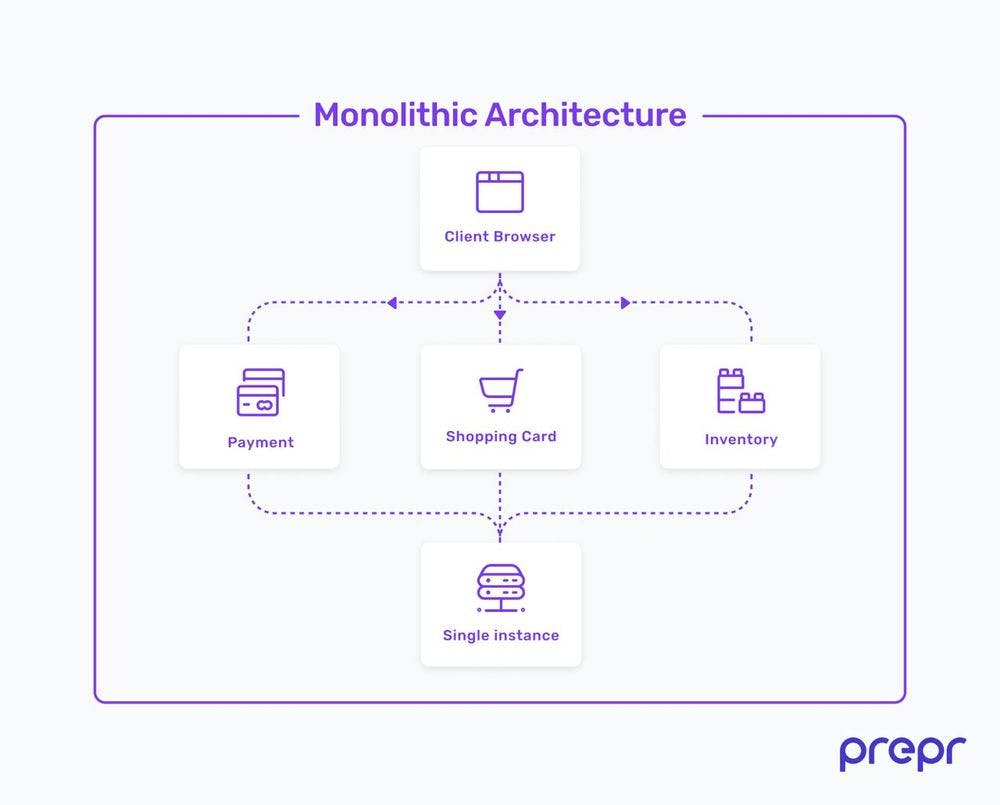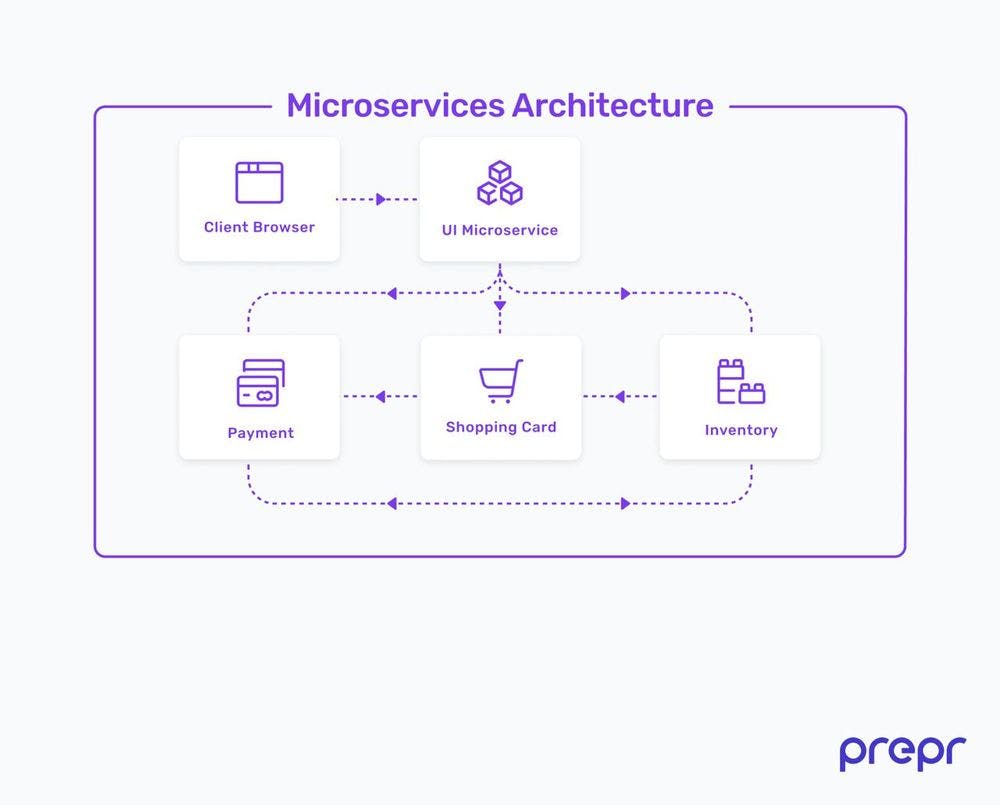Monolithic architecture

Before comparing both architectures, we’ll look into a monolithic architecture and how it’s developed. A monolithic architecture is a traditional model of a software program, which is built as a unified unit that is self-contained and independent from other applications. It is a singular, large computing network with one code base that couples all of the business concerns together. Changing this kind of application necessitates accessing the code base and developing and deploying an updated service-side interface to update the entire stack. Practice shows that the maintenance for updates becomes constrained and time-consuming as a result.
There are several advantages to monolithic architecture. The application is built on one code base which not only makes it easier to develop but also easier to debug certain errors and issues. It has an easy structure to test because it is a single, centralized unit. Monolithic systems are well-known by developer teams these days so creating such architecture doesn’t require special skills.
On the other hand, there are also some cons to monolithic applications. The development time of such systems is pretty high. Eventually, it makes the development process complicated and longer. It is more difficult to scale your application because you cannot scale individually. This can be expensive and also results in a lack of flexibility. Optimizing or changing a monolithic functionality can be very limited. The limitations are there with technology that is already built in the monolith. At last, being a single centralized unit has a big disadvantage in technical risk. Because all parts are linked, changing something anywhere in the code can take the whole architecture down.
Microservice architecture

Microservices are part of a MACH architecture. A MACH architecture creates an open and modular environment that allows businesses to embrace innovation and adapt to change faster with fewer risks. MACH stands for Microservices, API-first, Cloud-native, and Headless.

